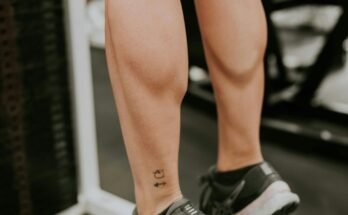Muscle recovery must always be performed for you to be fully functional and capable of engaging in physical activities or returning to that treadmill. Promoting recovery–whether in seasoned athletes or novices entering the fitness world—could lead to better performance, reduced injury risk, and improved wellness. This blog will explore the science of muscle recovery, different ways to recover after a workout, and how to improve your post-workout strategy.
What is Muscle Recovery?
Optimal recovery is the process through which muscles repair, rebuild, and strengthen post-exercise. After intense exercise—especially resistance or high-intensity interval training (HIIT)—muscle fibers get small tears in them. Recovery is important to aid these tears in healing and help the muscles adapt to the workload.
Why Muscle Recovery Is Key
Reduced Risk of Injury: Poor recovery can result in overuse injuries, like strains or sprains. Permitting recovery time helps to heal tissues and prevent injuries.
Better Performance: Following the recovery techniques will improve your strength, endurance, and overall athletic performance. It guarantees an opportunity for practical training in future workouts.
Lesson 3: If you keep pushing and fail to recover, you will transition from acute fatigue into chronic fatigue, which clearly destroys motivation and performance. Recovery: It helps replenish energy levels.
Muscle Recovery Benefits: Muscle recovery, and possibly the muscle being built, occurs when most growth strength gains occur—also referred to as muscle hypertrophy bodybuilding—a vital component for getting more robust and beastly in the gym!
Better Mental Health: Recovery is not a process meant only for our bodies; it has numerous psychological benefits. Relaxation helps reduce stress, which contributes to overall mental strength.
Science of muscle recovery (iStock)
To better understand the muscle recovery process, we first need an understanding of how muscles react when exposed to exercise. Workout-related changes in the body:
Muscular Breakdown: Elite training creates small tears in muscle fibers, which can be troublesome for an anti-inflammatory response. However, it is quite a normal part of building muscle and the damage caused.
Inflammation—This is an expected but necessary response to muscle breakdown; it signals the beginning of repair phases in our bodies. The key takeaway is that inflammation is essential for healing, but extreme inflammation can prevent progress.
Rest and Renewal: Damaged fibers are stimulated to repair by satellite cells, muscle stem cells that undergo activation, proliferate, and fuse, repairing the damage and leading to growth. Nutrition and other rest are among some variables that can affect this process.
Phases of Muscle Recovery
Acute Recovery: Immediately after exercise to 4–5 hours following exercise. Your body heals and repairs itself to rebuild damaged tissues; you replenish your energy stores while metabolic wastes are cleared out.
Restorative Recovery: This phase can last from a few hours to days and provides restoration for tissue repair and muscle growth. Now, it is extremely important that you feed yourself correctly and hydrate properly.
The Longest: Functional Recovery Realistically, stretching before the workout will take at most 5 minutes and fatigue recovery is an hour post-exercise so it can be noticed. Just remember how optimizing your rest hours comes in chasing progress as performance lifters! Note that this phase takes from days to weeks depending on exercise intensity/volume (comparatively determines synthetase activity). The idea is to return to training; however, the risk of injury will also be much lower.
Forward: To improve Muscle Recovery
1. Nutrition
Nutrition is key to muscle recovery. Both micro and macronutrients.
Protein: Eating enough protein after a workout to repair and grow muscles. Have 20-40g of protein within 30 minutes after working out, with whole food sources like lean meats, dairy, and legumes most beneficial.
Carbohydrates are crucial for replenishing glycogen stores, especially after the more intense weight training workouts. The best choices are whole grains, fruits, and vegetables, all of which provide complex carbohydrates.
Fats (Healthy fats; e.g., avocados, nuts, avocados, and oils): Healthy fats support overall body function and hormone production, which is essential for recovery.
Stay hydrated to help with nutrient transport and recovery. Drink water before, during, and after working out, and consider electrolyte-rich beverages for post-sweat sessions.
2. Sleep
We know that sleep is one of the most overlooked parts of recovery. Deep sleep is when the body releases growth hormones which aid muscle recovery and building. Need at least 7-9 hours of quality sleep each night. To improve sleep quality:
Set a Regular Sleep Schedule: Keep the same bed and wake times daily to help regulate your body’s internal clock.
Develop a Sleep Routine: Do something soothing about an hour before sleep (from reading to meditating).
Restriction of Screen Time Before Bed: Say goodbye to screens an hour before bed, as the blue light they emit can disrupt melatonin levels.
3. Active Recovery
Doing some low-intensity activity on rest days can help improve your recovery. Active recovery also helps to promote blood flow in muscles aiding them with soreness and stiffness. Activities can include:
Walking: A basic way to let the body think it’s moving without overdoing it)}}”>
Yoga: Combines stretching and relaxation, encouraging flexibility and discipline of the mind.
Swimming – The low-impact way to keep active while allowing muscles time to recover
Light Cycling | gets the blood moving and aids recovery; also easy on the old joints
4. Stretching and Mobility Work
Adding some stretches and mobility exercises helps open the body, increase flexibility, and reduce muscular tightness. Consider:
Static Stretching: A pose held for 15-30 seconds post-workout to increase muscle flexibility and minimize muscular tension.
Perform Dynamic Stretches: Dynamic stretches warm muscles and joints up for the upcoming physical activity.
Foam Rolling is a form of self-myofascial release that helps relieve muscle tightness or soreness, thus benefiting blood flow to the muscles.
5. Cold and Heat Therapy
Temperature therapy is an essential tool in muscle recovery.
- II) Cold Therapy—Ice baths or cold packs applied to the inflammation sites can help reduce soreness and muscle fatigue. These are usually effective 10-15 minutes after intense exercise, as cold therapy can become very productive in reducing swelling post-exercise.
Heat Therapy: Heat increases muscle relaxation and dilates blood vessels. It should be used in cases of non-inflammatory back pain. Apply heat when you are recovering or on rest days to further relax the muscles.
6. Supplements
Under specific circumstances, supplements can boost recovery if utilized appropriately. Before consuming any supplement, you should consult with a doctor. Popular options include:
Branched-chain amino acids (BCAA s) — These “may help decrease muscle soreness and facilitate recovery and are especially effective if consumed before or following a workout session.
That is where creatine may come into play, ensuring that there are high enough levels of adenosine triphosphate (ATP) to support recovery and potentially increase strength.
Omega-3 Fatty Acids: Omega 3s are known for their anti-inflammatory effect and can improve muscle recovery, reducing stiffness.
Glutamine is an amino acid that can help support immune function and decrease muscle soreness, aiding recovery.
7. Rest Days
You need to add rest days to your training routine. Rest: Muscles need rest to repair and rebuild stronger. Contingent upon how hard you are training, think about:
Rest Day: Complete rest gives your body a chance to recover fully
Active Rest: Participation in light activity, which aids recovery without putting strain on the body, e.g., leisurely walks or recreational sport
8. Stress and Mindfulness
Mental stress can be a hindrance to recovery. Recovery outcomes can also be improved by simple mindfulness and stress management practices. Consider:
Meditation: A few minutes of meditation can refresh you mentally, provide mental clarity and relaxation, and benefit recovery.
Breathing Exercises: Deep breathing methods can help to reduce cortisol and create a resting state for recovery.
Journaling: Journaling is known to process thoughts and random muddled emotions in individuals. By doing so, it characterized tendencies that enhanced stress levels, eventually leading a reader to find focus.
Signs You Need More Recovery
Most importantly, it feels like your body requires more rest time. Signs include:
Soreness that lingers: If you are sore for more than 3-4 days, it could be a sign that your muscles need extra time to heal.
Decreased Performance: If you suddenly find yourself much weaker or less potent than usual, this may indicate that you are fatigued and overtraining.
Lower Training Performance: If you consistently perform slower than the week before or are less able to perform at the same level as your recent PR, this indicates that there is not enough recovery time allotted.
Sleep is challenged: Trouble falling asleep & staying asleep limits recovery and health [84].
Regularly Injured or Strained: If you constantly get injured, chances are your recovery is low.
If that happens to you, it might be a good time for more rest and recovery.
The Part of Periodization in Rehabilitation
Use periodization, a planned training system that involves different phases (periods) in your overall exercise program. This can improve recovery and performance. Key concepts include:
Macrocycles — training plans that extend over months up to a year.
Mesocycles – three or four-week intermediate training cycles designed to target specific weaknesses and their respective goals.
Micro-cycles: short-term cycles that only last a week, focus on daily changes in training
Training periodization also helps avoid overtraining and maximizes recovery time, leading to better performance outcomes.
Conclusion
Whether you want to get faster, stronger, or better, muscle recovery is something everyone on an advanced path in the fitness world should be familiar with. Healthy alternatives to improve recovery and maximize performance while minimizing injury rates are vital to performing better or reaching fitness goals. Recovery is not a luxury; lay off those successful training runs once you have found them.
Practice these beginner tips, listen to your body, and enjoy the muscle recovery ride for better performance and life. Appreciating recovery opens the path to a brighter, healthier future.



